Something Old, Something New, Something Borrowed, Something Blue

Something/Someone Old
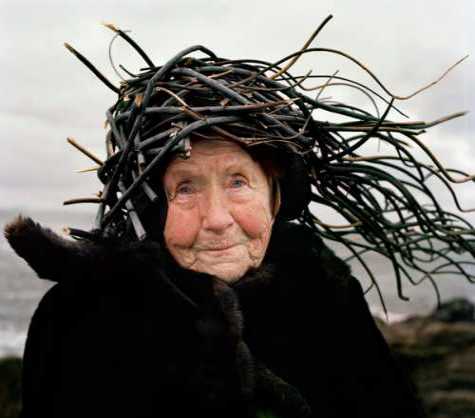
I keep going archaeological in this section, but it's so damned interesting. Especially when I know very little about whatever it is, which is most of the time.
Today my Something Old is the Chaco Canyon ruins:
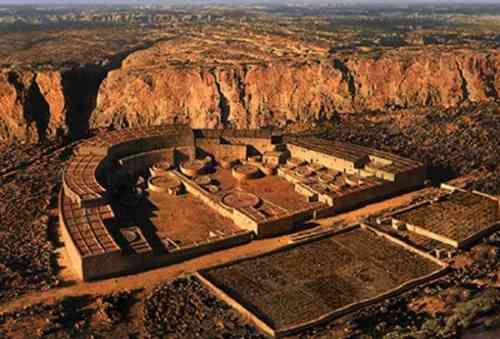

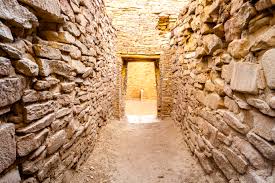
Chaco Canyon resides within two counties in New Mexico. It was home to what archaeologists call the Ancient Pueblo Peoples from around 850 to 1150 AD.
Chacoans quarried sandstone blocks and hauled timber from great distances, assembling fifteen major complexes that remained the largest buildings in North America until the 19th century.Evidence of archaeoastronomy at Chaco has been proposed, with the "Sun Dagger" petroglyph at Fajada Butte a popular example. Many Chacoan buildings may have been aligned to capture the solar and lunar cycles,requiring generations of astronomical observations and centuries of skillfully coordinated construction. Climate change is thought to have led to the emigration of Chacoans and the eventual abandonment of the canyon, beginning with a fifty-year drought commencing in 1130.
By 850, the Ancient Pueblo population—the "Anasazi", from a Ute term adopted by the Navajo denoting the "ancient ones" or "enemy ancestors"—had rapidly expanded: groups resided in larger, more densely populated pueblos.
Interestingly, the Hopi claim kinship with these folks.
They built big, they built with precision, and they built with persistence. I know little about masonry, but their techniques were apparently unlike any of their contemporaries'.Evidently these structures took decades or even longer to build. Their biggest structures--the "great houses"--were for worship:
Immense complexes known as "great houses" embodied worship at Chaco...Most apparent is their sheer bulk; complexes averaged more than 200 rooms each, and some enclosed up to 700 rooms. Individual rooms were substantial in size, with higher ceilings than Anasazi works of preceding periods. They were well-planned: vast sections or wings erected were finished in a single stage, rather than in increments. Houses generally faced the south, and plaza areas were almost always girt with edifices of sealed-off rooms or high walls. Houses often stood four or five stories tall, with single-story rooms facing the plaza; room blocks were terraced to allow the tallest sections to compose the pueblo's rear edifice. Rooms were often organized into suites, with front rooms larger than rear, interior, and storage rooms or areas.
This is the most famous "great house," Pueblo Bonito (I'm not sure "pretty" would be the first word to leap to mind when I contemplated this structure; "impressive" would be closer--maybe "Casa Tan Grande").

Ceremonial structures known as kivas were built in proportion to the number of rooms in a pueblo. One small kiva was built for roughly every 29 rooms. Nine complexes each hosted an oversized great kiva, each up to 63 feet (19 m) in diameter. "T"-shaped doorways and stone lintels marked all Chacoan kivas. Though simple and compound walls were often used, great houses were primarily constructed of core-and-veneer walls: two parallel load-bearing walls comprising dressed, flat sandstone blocks bound in clay mortar were erected. Gaps between walls were packed with rubble, forming the wall's core. Walls were then covered in a veneer of small sandstone pieces, which were pressed into a layer of binding mud. These surfacing stones were often placed in distinctive patterns. The Chacoan structures altogether required the wood of 200,000 coniferous trees, mostly hauled—on foot—from mountain ranges up to 70 miles (110 km) away.
Sadly, this is part of what eventually did the Chacoans in; they deforested their local landscape. Combined with a vicious 50-year drought, the effect was catastrophic.
The meticulously designed buildings composing the larger Chacoan complexes did not emerge until around AD 1030....Around this time, the extended Ancestral Puebloan (Anasazi) community experienced a population and construction boom...By AD 1115 at least 70 outlying pueblos of Chacoan provenance had been built within the 25,000 square miles (65,000 km2) composing the San Juan Basin. Experts speculate the function of these compounds, some large enough to be considered great houses in their own right. Some suggest they may have been more than agricultural communities, perhaps functioning as trading posts or ceremonial sites.
This is an outlying site:
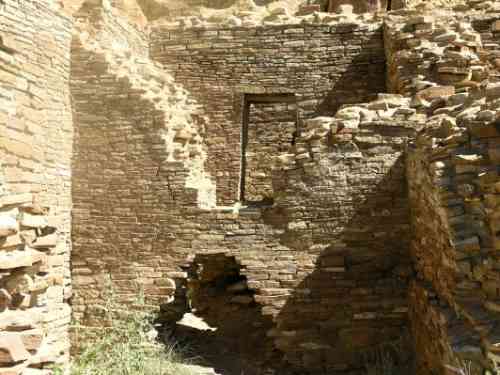
They had about 100 years of cultural flowering before their collapse around 1150.
This is interesting:
Researchers have concluded that the complex may have had a relatively small residential population, with larger groups assembling only temporarily for annual ceremonies. Smaller sites, apparently more residential in character, are scattered near the great houses in and around Chaco.
Perhaps the entire site was more analogous to a place of religious pilgrimage than anything else. Though they had a bustling mining industry, jewelry-making industry and trade in turquoise:
Turquoise was very important to the people of Chaco. Around 200,000 pieces of turquoise have been excavated from the ruins at Chaco Canyon, and workshops for local manufacture of turquoise beads have been found. The turquoise was used locally for grave goods, burials and ceremonial offerings. Over 15,000 turquoise beads and pendants accompanied two burials at Pueblo Bonito.

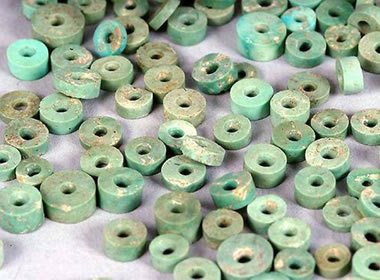
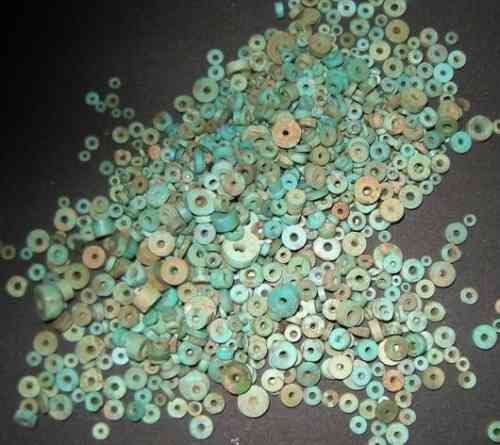
Anybody who knows more about these people than I do (not hard), please chime in! I know we have some caucusers from the American southwest.
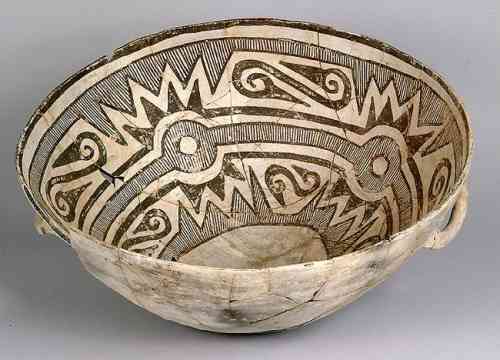
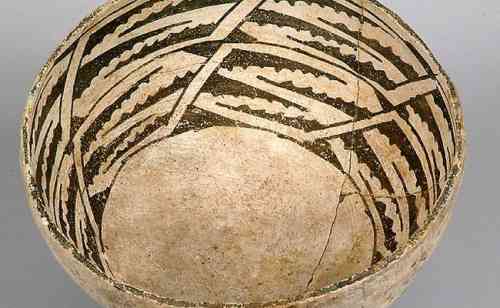
Something New

Someone is updating braille. This is an intriguing project. The CEO/inventor (Andrew Chepaitis) claims that people can learn his system in 3 hours, whereas braille can take years, and apparently only about 1% of the visually impaired can read braille.Also, braille is apparently not scalable because the distance between dots means something. This system, Elia Frames, scales into whatever fonts necessary.
If Louis Braille re-invented a tactile alphabet today, we believe he wouldn’t have limited his design solely to the use of dots. Braille was invented in 1824, when the most efficient way for a blind person to make a tactile letter was to push a pointed object into a piece of paper.
— Andrew Chepaitis, ELIA President/CEO
I have to admit that's convincing. All they had--or the best they had--were pencils and pens.
I don't know if I'm convinced by this guy or not, but I think his ideas are well worth exploring, and I hope he makes his Kickstarter goal, so that we can see what it looks like when they have something better than a printer from the 90s hacked to create a tactile alphabet.
Something Borrowed
We borrowed the word "tycoon" from the Japanese! That's something I didn't know.
Taikun means "great prince" or "high commander," and its importation into English to describe a man who amasses great wealth in business aptly reveals the unacknowledged feudal nature of our economic system.
Of course, the difference is that a great prince or high commander occasionally had to risk himself in battle, whereas a tycoon doesn't have to risk himself ever in any respect.
Something Blue
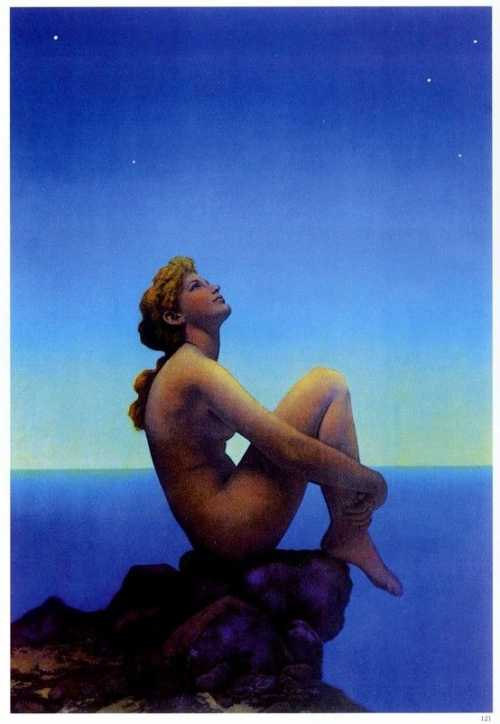
Meet the River of Grass, the southernmost part of the Everglades. I know it's at least as much green as it is blue, but I think it's blue enough to qualify.
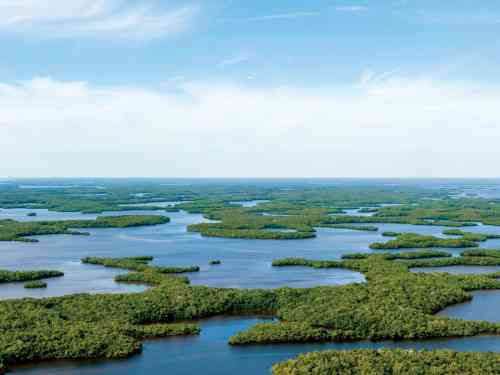

As a lifelong resident of Florida, I really should go there sometime. But my mom's tales of my cousin's home in the Everglades is discouraging. Very industrial, with huge walls holding back water, or potential floodwater. It sounds dispiriting.
Apparently all this started with a 1947 book by a woman called Marjory Stoneman Douglas, the first to call the Glades the "River of Grass:"
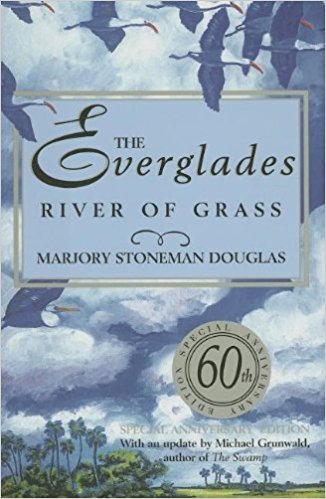
Before 1947, when Marjory Stoneman Douglas named The Everglades a "river of grass," most people considered the area worthless. She brought the world's attention to the need to preserve The Everglades. In the Afterword, Michael Grunwald tells us what has happened to them since then. Grunwald points out that in 1947 the government was in the midst of establishing the Everglades National Park and turning loose the Army Corps of Engineers to control floods--both of which seemed like saviors for the Glades.
That must account for the environs of my cousin's house.
But neither turned out to be the answer. Working from the research he did for his book, The Swamp, Grunwald offers an account of what went wrong and the many attempts to fix it, beginning with Save Our Everglades, which Douglas declared was "not nearly enough." Grunwald then lays out the intricacies (and inanities) of the more recent and ongoing CERP, the hugely expensive Comprehensive Everglades Restoration Plan.
In contrast, the parks and preserves, where I imagine big industrial walls do not reside, sound intimidating. I know how Florida can be in its ordinary swampy aspect; this sounds like its ordinary swampiness on steroids. I'm glad it's there (to the extent that it still is), yet I feel a bit shy of trekking into it.
Maybe Alphalop could give us his impressions--I know he lives a lot closer to the Glades than I ever have!
How are y'all today?


Comments
A Thief of Time
Few are guilty, but all are responsible.”
― Abraham Joshua Heschel, The Prophets
@phillybluesfan I remember that book well
I remember that book well. One of my favorites of Hillerman's, though not my absolute favorite, which is People of Darkness.
I was a big fan of Hillerman. Then Meteor Blades excoriated Hillerman for making money off an indigenous culture, and I backtracked a bit from my enthusiasm.
You see, I'd always thought Hillerman was a friend of theirs, that he essentially lived as their neighbor and they knew him, and I always figured they were OK with what he was doing. And for all I know, they are. But then again, the only reason I think any of that is because Tony Hillerman told me so. So for all I know, they aren't.
At that point, I threw my hands up in frustration, since I'm unlikely to venture to Arizona or New Mexico, go out to the various Dineh lands, and ask the people there what they think of Tony Hillerman and whether or not it's OK for me to like his books. Since I'd already bought most of his Leaphorn mysteries, and the money was already spent, well, at worst it's like buying a piece of 100-yr-old mahogany furniture. I'd never buy a new piece of mahogany furniture, but there's no resurrecting the forests out of furniture made a hundred years ago, and therefore there's no sensible moral gesture to be made in not buying it. There's also no going back in time and fighting alongside the workers who were likely oppressed in true colonial fashion on those plantations. It's all done already. In the case of Hillerman, I had already spent the money back when I hadn't thought about potential problems with his books. I can't unspend it. And I have no convenient way to find out whether the Dineh have a problem with him or not. Ethical failure on my part or not, I'm simply unwilling to make the effort to travel that far and talk to total strangers to ask a question that could well seem quite ridiculous to them.
"More for Gore or the son of a drug lord--None of the above, fuck it, cut the cord."
--Zack de la Rocha
"I tell you I'll have nothing to do with the place...The roof of that hall is made of bones."
-- Fiver
Tony Hillerman
I worked for several yeas in a used book store here in Tucson during the early 1990s. Hillerman was an extremely popular author whose books flew off the shelves. I recall him being classified as a mystery genre author. People often raved to me how good his books were.
But at that time I read pretty much only nonfiction and sci fi/fantasy, I had no interest in mysteries... and it was always my impression that he was writing essentially for tourists to the southwest. I’m not sure exactly why I thought that, but his stuff just had the look and feel of typical SW tourist junk that is sold out here. Fake Indian stuff, fake cowboy stuff, it’s everywhere. I grew up around it, know it well. I never read any of his books. He may well be a great author of mysteries. He may even do good research into the culture he writes about. I honestly have no idea. I judged his books by their covers, I suppose. Anyway, I never heard of any controversy around him, but that doesn’t mean there isn’t one.
I think you can like his books, if you like them. But I know what you mean... there’s a number of sci fi writers whose books I loved, then I found out they are jerks, and worse. And now I can’t like their books anymore. Not that I chose not to. I just can’t read them the same way anymore. I think with Hillerman, for me it wouldn’t be based on whether some people are upset, but on whether his research is thorough and his books reflect an accurate portrait or not. To the extent that’s reasonable within the context of genre fiction. I do read some historical novels now, and that’s the criteria I find most important... well, after being a good writer, telling a good story, and using a good editor and proofreader.
Great essay today CStMS. Thank you!
@CS in AZ You're welcome!
You're welcome!
"More for Gore or the son of a drug lord--None of the above, fuck it, cut the cord."
--Zack de la Rocha
"I tell you I'll have nothing to do with the place...The roof of that hall is made of bones."
-- Fiver
Exploitation Is Relative
I am not a indigenous insider, but reading Hillerman does not feel like exploitation to me ... certainly not compared to this:
and this:
Few are guilty, but all are responsible.”
― Abraham Joshua Heschel, The Prophets
Some videos on the rights of women in Socialist countries
[video:https://www.youtube.com/watch?v=oYFA2wCDw7A]
[video:https://www.youtube.com/watch?v=rYeIleea3FA]
Modern education is little more than toeing the line for the capitalist pigs.
Guerrilla Liberalism won't liberate the US or the world from the iron fist of capital.
We are a speck of dust in the space of time
Whenever I read about vast civilizations that have come and gone, I am reminded of how minuscule we are in the midst of time and space.
Beautiful and sobering.
Marilyn
"Make dirt, not war." eyo
@mhagle That's a cool reaction.
That's a cool reaction. Mine is, perhaps, more egotistical: I sense myself part of a big continuity (which is, nonetheless, a speck in space and time).
Julian of Norwich had a wonderful insight into our smallness:
And in this vision, he showed me a little thing, the size of a hazelnut, lying in the palm of my hand, and to my mind’s eye it was as round as any ball. I looked at it and thought, ‘What can this be?’ And the answer came to me, ‘It is all that is made.’
"More for Gore or the son of a drug lord--None of the above, fuck it, cut the cord."
--Zack de la Rocha
"I tell you I'll have nothing to do with the place...The roof of that hall is made of bones."
-- Fiver
I like that too!
Small yet the universe.
Marilyn
"Make dirt, not war." eyo
Good morning, everybody!
"More for Gore or the son of a drug lord--None of the above, fuck it, cut the cord."
--Zack de la Rocha
"I tell you I'll have nothing to do with the place...The roof of that hall is made of bones."
-- Fiver
Good morning
I've been interested in the desert farming techniques these ancient people employed. As we increasingly degrade our environment and make it more challenging to grow food, we will have to become more innovative. Apparently even with some of their ingenious techniques, it wasn't enough to survive in that particular environment.
Here is a quick summary from Wikipedia:
Good morning. Nice column, CStMS. The Anasazi also
built a network of great roads radiating out from Chaco. There is no known prior roadbuilding culture in the area, nor any after. IIRC, some assert that this is a borrowing from the Maya (long straight roads, often wide and even parallel roads, like a multilane highway). I am at risk of confusing and conflating with the Hokoham, but there is other evidence of trade and cultural exchange with mesoamerica, and water management strategies including canals and such.
I have watched braille users take lecture notes and otherwise "write" braille with a little folding frame and an awl like gadget. The frame has a phantom grid of detents to assure proper location of the awl point, all quite small and portable. Also seemingly easy to use by pure feel. I'm rushed today, so only saw part of the vid, and without sound, but how is a non-sighted person to rapidly and readily made all the circles and squares by hand, especially in their lap or otherwise without a table. I note the idea that there is a derivative similarity to the roman alphabet, which may be of use to those who suffered vision loss. but to those who never saw the roman alphabet it is of no possible benefit per se. Just quick thoughts.
Thanks for the OT and have a great day.
That, in its essence, is fascism--ownership of government by an individual, by a group, or by any other controlling private power. -- Franklin D. Roosevelt --
@enhydra lutris Fascinating. I'd love to
Fascinating. I'd love to see an aerial view of the roads.
"More for Gore or the son of a drug lord--None of the above, fuck it, cut the cord."
--Zack de la Rocha
"I tell you I'll have nothing to do with the place...The roof of that hall is made of bones."
-- Fiver
I tried a quick google
and found something else, but something you might find interesting, big-ass pdf: http://npshistory.com/series/archeology/18h/report.pdf (The culture and ecology of ...)
then I found this page: https://www.google.com/search?q=anasazi+road+network+from+the+air&tbm=is...
which eventually gets to some pics with the furrows of the old roads. There are a ton of pics at that page
Ignore the roads - they are modern, look at the furrows which are the ancient roads.
That, in its essence, is fascism--ownership of government by an individual, by a group, or by any other controlling private power. -- Franklin D. Roosevelt --
This week I finally
watched the movie Moonlight. I've been putting it off because I heard it was heartbreaking and I'm not really up for that. It was actually more beautiful than heartbreaking (by just a bit) and I'm very glad I saw it.
Here's a quick description for those who have not seen it:
Reminds me of the Vatican Apartments
Except without all the Rennaisance paintings. Impressive building. Amazing the things people can build.
There is always Music amongst the trees in the Garden, but our hearts must be very quiet to hear it. ~ Minnie Aumonier